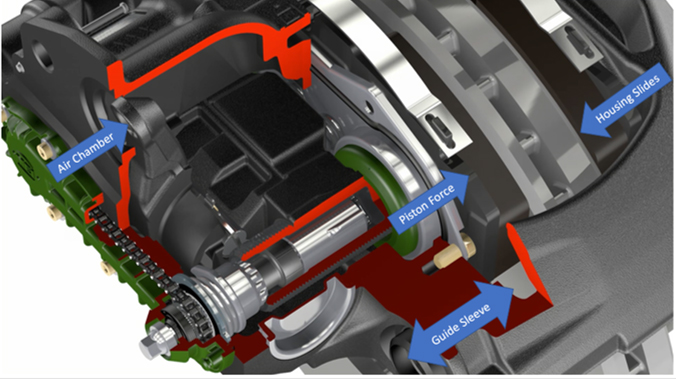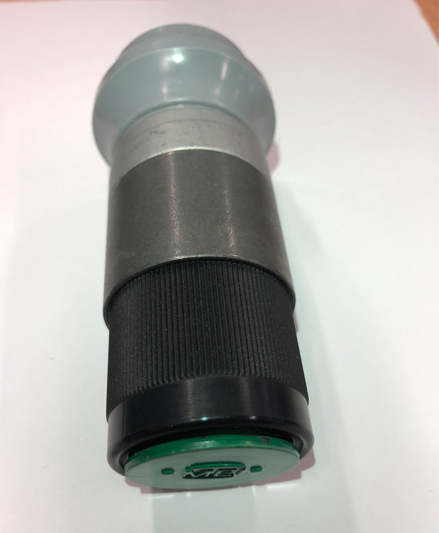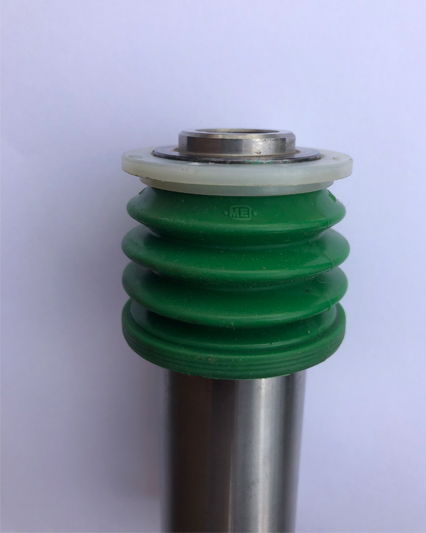
MEI Brakes take a look at the maintenance of guide sleeves.
As a vital part of the braking function worn or seized guide sleeves have severe effects on brake pad and disc wear. This can lead to overheating with severe consequences to wheel end components, which will most likely lead to a vehicle breakdown.

How to check
1. If sliding becomes stiff or seized, the first effect will be the outboard pad showing signs of higher wear than the inboard pad, and the brake will run hotter than normal – heat marks or blue spots may be seen on the disc.

2. During the vehicle’s regular inspection, try to get a feel for the condition of the caliper guide sleeves. Standing in the inspection pit, and with the park brakes released (make sure the vehicle is chocked and safe!), the mechanic can apply force to move the air chamber/caliper on the guide sleeves. If the caliper can be moved easily the pins are not seized, while if it is stiff then further investigation will be needed.

Maintaining your guide sleeves

1. During the regular vehicle inspection, always inspect the guide sleeve boots and tappet boots for mechanical damage or heat damage. They are silicon rubber and are tough, but it is possible for debris to damage the boots. If the guide sleeve boots are heat damaged, this may be a sign that the caliper is not sliding correctly. If there is any damage to the boots, then they must be changed with a new, good quality, guide sleeve repair kit.
2. So long as no water or dirt is entering the guide sleeves, they should last a long time, but they are serviceable items due to the vibrational load that they experience. If they remain free from seizure then they may become worn after time and need to be changed. The MEI maintenance instructions give guidance on how much clearance is allowed before bushes/sleeves need changing.
3. An open guide sleeve with a rubber bush is fitted to some calipers, and these can become clogged with dirt or debris in certain applications. MEI is set to release a fully sealed short guide sleeve on its LB225, LV225, LA225 and LB195 range of calipers (spring 2019) to further improve life and reliability for these applications.
Changing the guide sleeve system

1. Service issues can be caused by incorrectly fitted guide sleeve protection caps – they can be tricky to fit without the correct tool. If you don’t have a purpose made protective cap fitting tool, ensure that you use a metal drift that fully covers the surface of the cap, and that you can hold it square. If the cap is not parallel, and fitted to the correct depth, there is a risk of water ingress which will cause the guide sleeves to seize.
2. When fitting the guide sleeve protective caps, always ensure that the guide sleeve boot is in the compressed (new pad) condition, otherwise the caliper movement may be limited after fitting the cap.
3. After ensuring the sealing bead of the guide sleeve boot is correctly seated in its groove (on the guide sleeve), it is important to make sure the white plastic washer is correctly fitted onto the boot – this keeps the bead seated in the guide sleeve and without it, water ingress is likely.
4. When tightening the guide sleeve bolts, ensure the carrier is securely clamped in a vice at the same side of the carrier being tightened – the carrier can twist or bend (due to the high load applied when tightening the bolt) if this is not followed. If the carrier is still mounted to the axle, there is no risk.

5. Only use the original grease supplied with the guide sleeve kit, or fitting kit. Other greases may not be compatible with the guide sleeve boot material.








